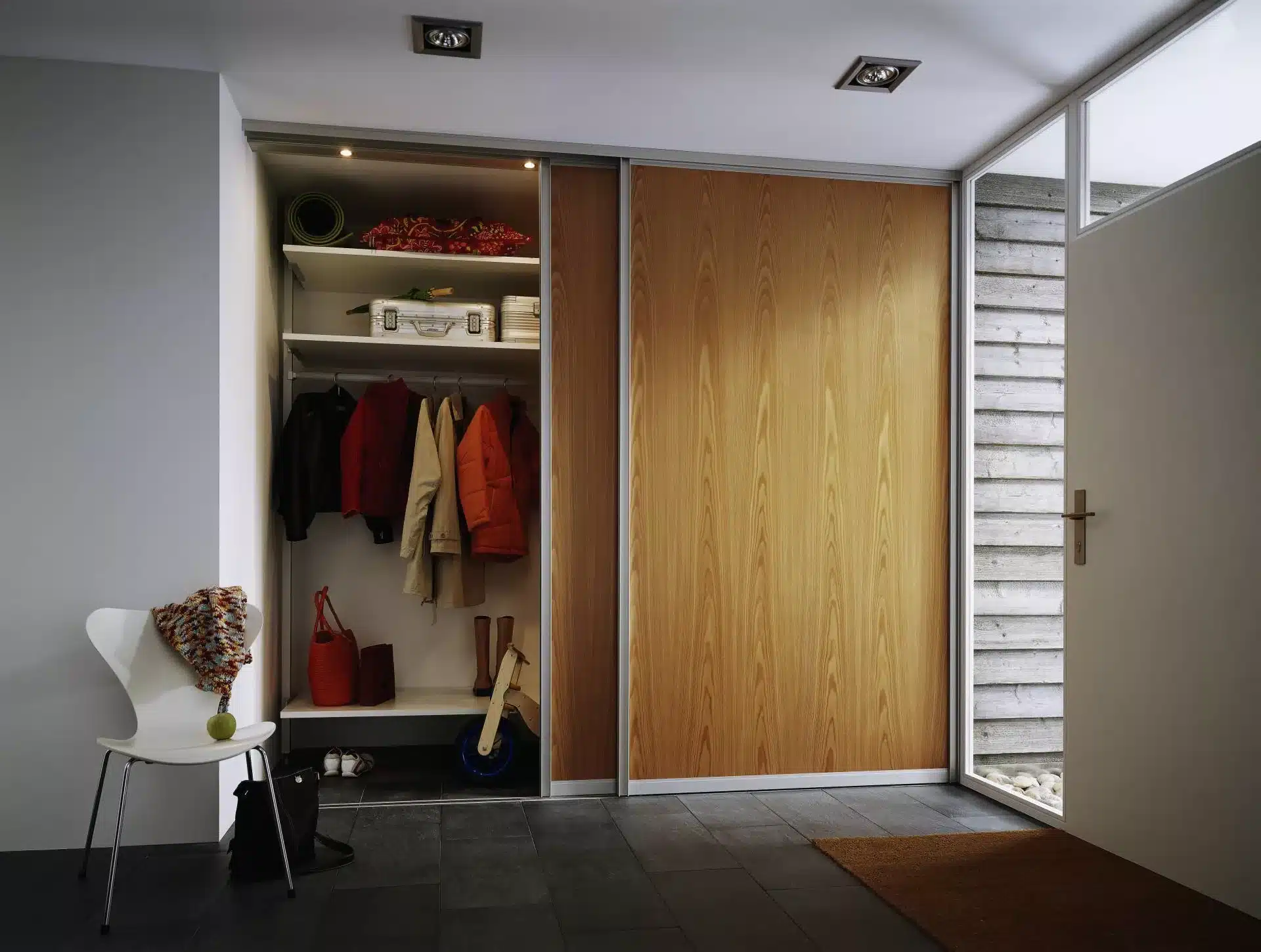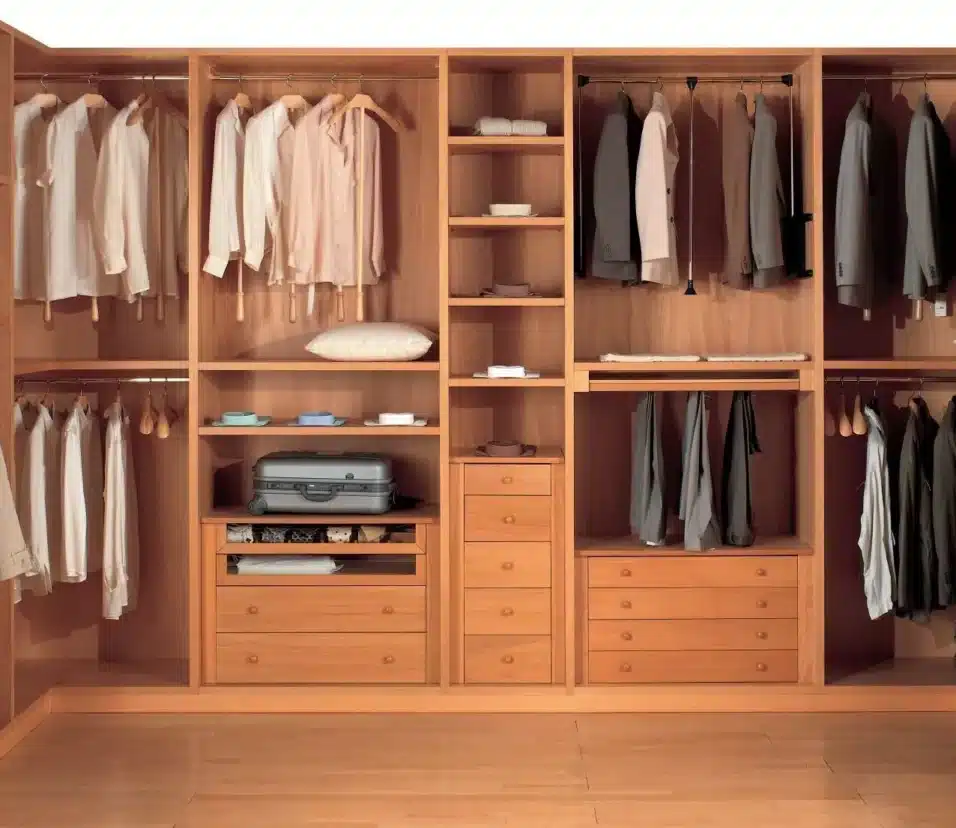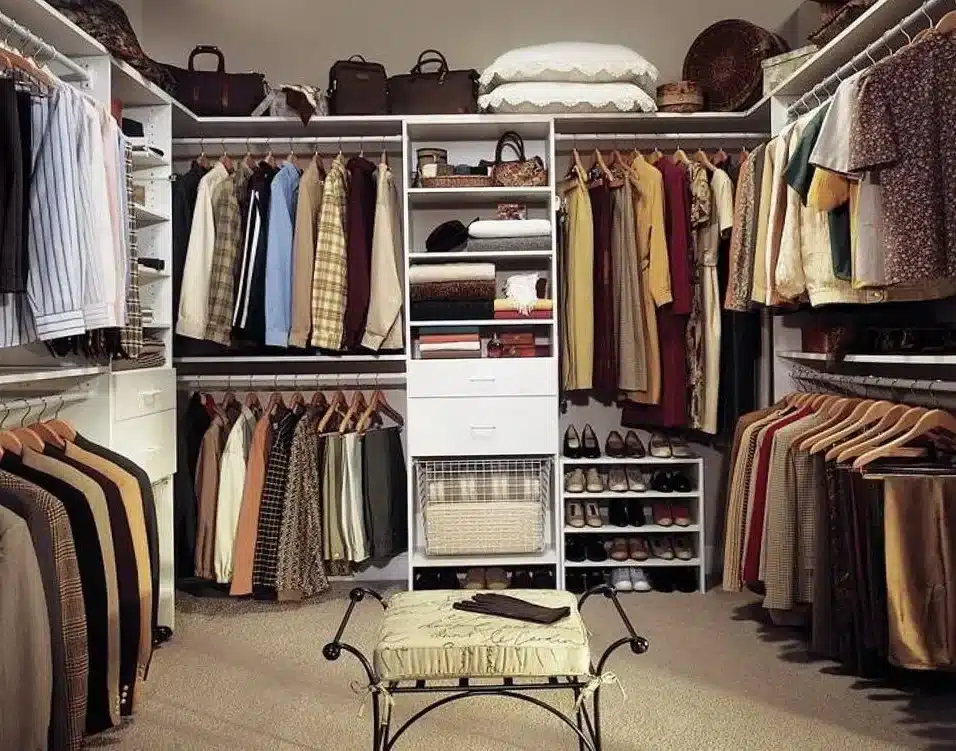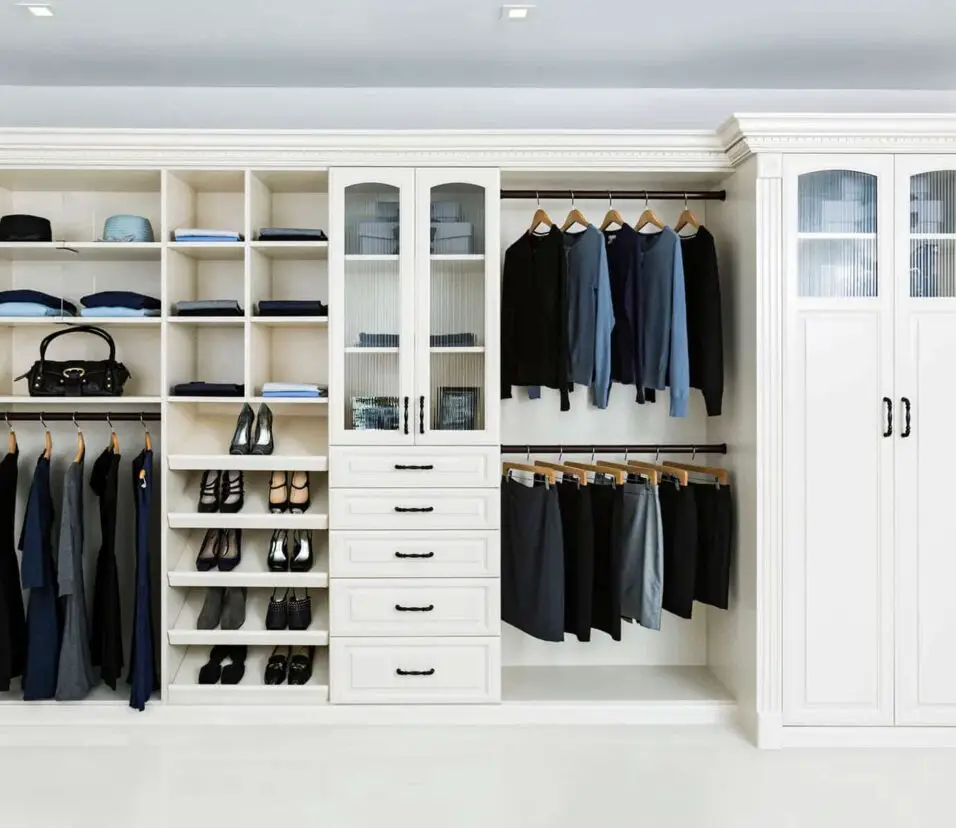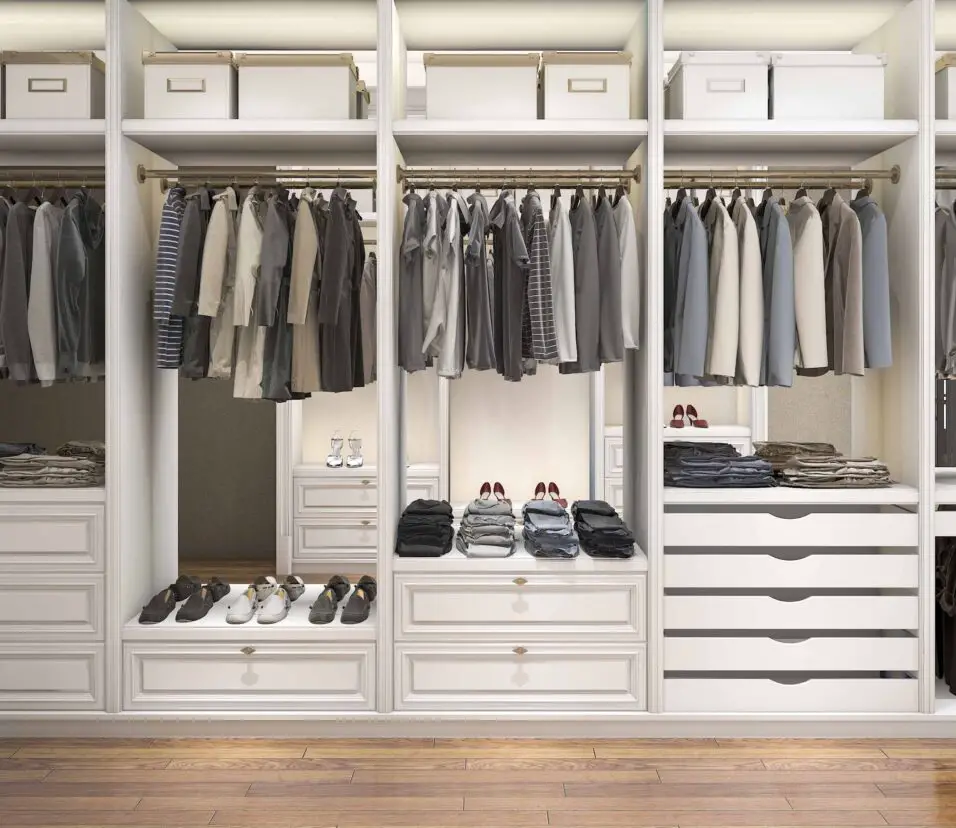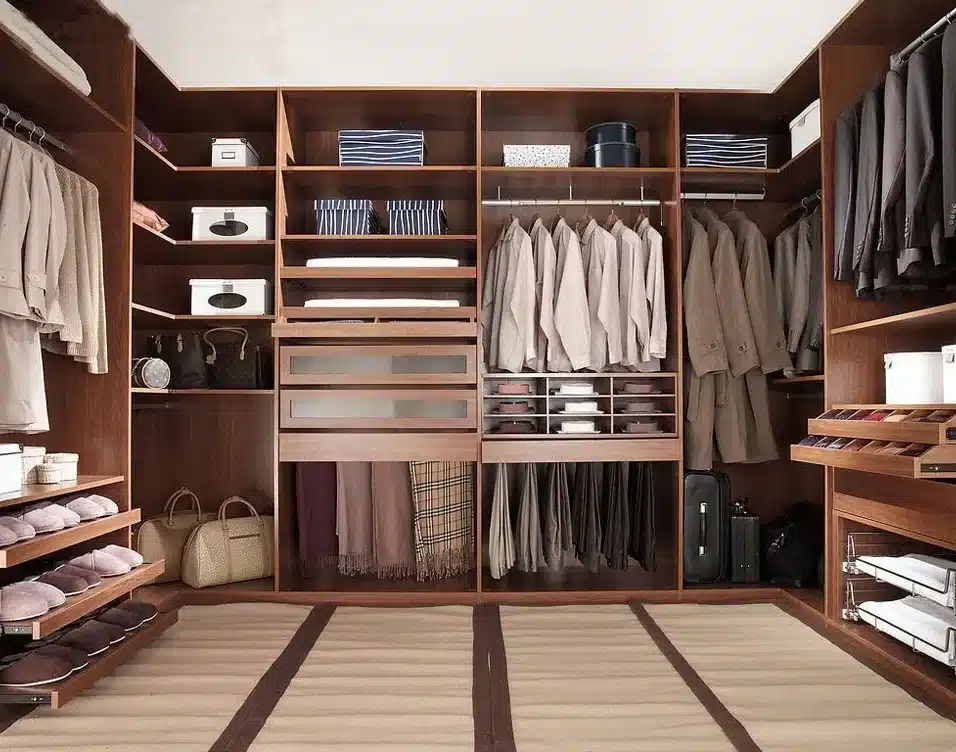How To Install Sliding Doors On A Wardrobe
Introduction
How To Install Sliding Doors On A Wardrobe: Sliding doors on a wardrobe can be a stylish and practical addition to any bedroom. Not only do they save space by eliminating the need for swing-out doors, but they also provide a sleek and modern look. Whether you are looking to update your current wardrobe or are starting from scratch, installing sliding doors is a relatively simple process that can be done with just a few tools and some basic carpentry skills.
Next, you will need to choose the type of sliding doors that best suit your needs and style preferences. There are several options available, including mirrored doors, frosted glass doors, and solid wood doors. Consider the overall aesthetic of your bedroom and the functionality you require from the wardrobe box when making your decision. Keep in mind that mirrored doors can make a small space appear larger, while frosted glass doors can add a touch of elegance.
Once you have purchased the sliding doors, it is time to begin the installation process. Start by removing any existing doors or trim from the wardrobe opening. Then, attach the track to the top of the opening using screws and a level to ensure it is straight. The track will serve as the guide for the sliding doors, so it is important to make sure it is securely fastened.
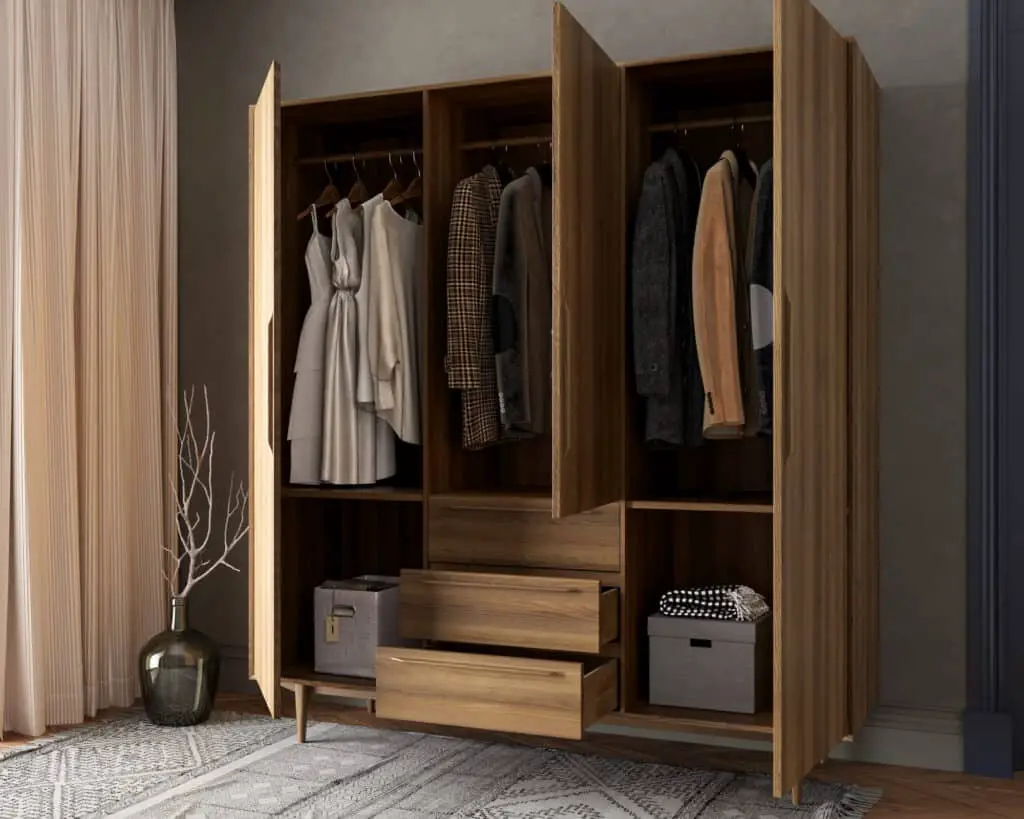
Can you put sliding doors on existing wardrobes?
One of the fastest and cheapest ways to update you old tired wardrobe is to replace your existing standard door with modern sliding wardrobe doors. This is a simple procedure that can be done on most wardrobes. You can also get your old interior upgraded while you at it and make it more user friendly.
Yes, it is possible to put sliding doors on existing wardrobes. Sliding doors are a popular choice for wardrobes as they are space-saving and provide easy access to the contents inside. Whether you have a built-in wardrobe or a freestanding one, you can easily upgrade it with sliding doors to enhance its functionality and aesthetics.
One of the advantages of sliding doors is that they can be customized to fit any size or style of wardrobe. Whether your wardrobe is small or large, sliding doors can be made to measure to ensure a perfect fit. This means that you don’t have to worry about finding the right size doors for your existing wardrobe.
Designing Elegance: Options for Sliding Doors
When it comes to the design of sliding doors, there are numerous options to choose from. You can opt for mirrored sliding doors, which not only add a touch of elegance to your wardrobe but also create an illusion of a larger space. Alternatively, you can choose from a wide range of materials and finishes, such as glass, wood, or even a combination of both, to match your existing wardrobe and complement your interior decor.
Installing sliding doors on existing wardrobes is a relatively straightforward process. However, it is recommended to hire a professional to ensure that the installation is done correctly and safely. A professional installer will have the necessary tools and expertise to measure and fit the doors accurately, ensuring a smooth and hassle-free installation.
If you are looking to upgrade your existing wardrobe, adding sliding doors is a great option. They not only provide easy access to your belongings but also enhance the overall look and functionality of your wardrobe. With a wide range of customization options available, you can easily find sliding doors that suit your style and requirements.
Is it easy to install sliding wardrobe doors?
Installing your own bespoke fitted wardrobe and sliding wardrobe doors is easier than you think and doesn’t take up much time, when done correctly. Let us take you through the process of installing and fitting your sliding wardrobe doors, step by step, so you can have the wardrobe of your dreams in no time at all.
Installing sliding wardrobe doors can be a relatively easy task, especially if you have some basic DIY skills. With the right tools and materials, you can transform your bedroom or closet into a stylish and functional space. However, it is important to note that the level of difficulty may vary depending on the type of sliding doors you choose and the existing structure of your wardrobe.
Installing Sliding Wardrobe Doors: A Step-by-Step Guide
Firstly, it is important to measure the space where you plan to install the sliding wardrobe doors. Accurate measurements are crucial to ensure that the doors fit properly and slide smoothly. You will need to measure the height, width, and depth of the opening, as well as any obstructions such as skirting boards or light switches.
Secondly, you will need to choose the right type of sliding doors for your wardrobe. There are various options available, including mirrored doors, frosted glass doors, and wooden doors. Consider the style and design of your room when making your decision. It is also important to choose doors that are the correct size for your opening.
Once you have your measurements and chosen your doors, you can begin the installation process. Start by removing any existing doors or tracks from your wardrobe. Then, attach the tracks to the top and bottom of the opening, making sure they are level and secure. Next, hang the doors on the tracks and adjust them as necessary to ensure they slide smoothly.
Finally, you may need to make some adjustments or additions to complete the installation. This could include adding handles or knobs to the doors, installing a floor guide to keep the doors aligned, or adding a soft-close mechanism for a quieter closing action. Follow the manufacturer’s instructions for any additional steps or considerations specific to your chosen doors.
How do you install wardrobe door tracks?
Installing Sliding Wardrobe Doors
- Cut the tracks. Carefully measure the width of the opening at top and bottom, and reduce the lengths measured by about 2-3 mm. …
- Install the top track.
- Install the door.
- Install the bottom track.
- Adjust door position.
Installing wardrobe door tracks is a relatively simple process that can be done by anyone with basic DIY skills. Whether you are replacing old tracks or installing new ones, following a few steps will ensure a smooth and hassle-free installation. In this guide, we will walk you through the process of installing wardrobe door tracks, providing you with all the necessary information to get the job done.
Step 1: Measure and prepare
Before you begin the installation process, it is important to measure the width and height of your wardrobe opening. This will help you determine the length of the tracks you need to purchase. Additionally, make sure to clear the area around the wardrobe and remove any existing doors or obstructions.
Step 2: Mark the positions
Using a pencil or marker, mark the positions where the tracks will be installed. Start by measuring and marking the desired height for the top track. Then, measure and mark the positions for the bottom track, ensuring that it is parallel to the top track. Use a level to ensure accuracy.
Step 3: Install the tracks
Using a drill and screws, attach the tracks to the wardrobe frame. Make sure to align the tracks with the marked positions and secure them firmly. If necessary, use wall anchors for added stability. Repeat this process for both the top and bottom tracks.
Do sliding wardrobe doors need a frame?
There are a number of ways to create a frame around your sliding wardrobe doors. Note: A frame is required if the aperture housing your sliding wardrobe is not true and square.
Sliding wardrobe doors have become increasingly popular in recent years due to their sleek and modern design. One common question that arises when considering these types of doors is whether or not they need a frame. The answer to this question depends on a few factors, including the specific type of sliding door and the desired aesthetic.
Traditional sliding wardrobe doors typically do require a frame. This frame provides stability and support for the doors, ensuring that they slide smoothly and securely. The frame also helps to keep the doors aligned and prevents them from sagging or becoming misaligned over time. Additionally, the frame adds a finished look to the doors, giving them a more polished appearance.
Framed vs. Frameless: Choosing Between Sliding Wardrobe Door Styles
However, there are also frameless sliding wardrobe doors available on the market. These doors are made from a single sheet of glass or another material and do not require a frame for support. Frameless doors can create a more minimalist and contemporary look, as they appear to float in front of the wardrobe. They can also be easier to clean and maintain, as there are no frames to collect dust or debris.
It’s important to note that while frameless sliding wardrobe doors can be visually appealing, they may not be as durable or long-lasting as doors with frames. The lack of a frame can make the doors more susceptible to damage and may require more careful handling. Additionally, frameless doors may not provide the same level of insulation or soundproofing as doors with frames.
Whether or not sliding wardrobe doors need a frame depends on the specific type of door and the desired aesthetic. Traditional doors typically require a frame for stability and support, while frameless doors offer a more minimalist look but may be less durable. Consider your preferences and needs when choosing between framed and frameless sliding wardrobe doors.
Are sliding doors better than normal doors wardrobe?
A sliding door wardrobe with mirrors can give the illusion of a more spacious bedroom. The main advantage is that they do not require a lot of room in front of them since the door slides sideways. Thus, it makes it an excellent choice for smaller, more confined spaces in today’s homes.
When it comes to choosing a wardrobe for your home, one of the decisions you may have to make is whether to opt for sliding doors or normal doors. Both options have their own advantages and disadvantages, and the choice ultimately depends on your personal preferences and the specific needs of your space. However, there are a few factors to consider that may make sliding doors a better option for your wardrobe.
Advantages of Sliding Wardrobe Doors: Space-Saving and Stylish Solutions
Firstly, sliding doors can be a great space-saving solution. Unlike normal doors that swing open and take up valuable floor space, sliding doors simply glide along a track, allowing you to make the most of the available area in your room. This can be particularly beneficial in smaller rooms or rooms with limited space, where every inch counts.
Secondly, sliding doors can offer a sleek and modern aesthetic to your wardrobe. The clean lines and smooth operation of sliding doors can add a touch of elegance to any room, creating a more contemporary and stylish look. This can be especially appealing if you have a modern or minimalist interior design theme.
Additionally, sliding doors can provide easier access to your wardrobe. With normal doors, you may need to leave enough space in front of the wardrobe for the doors to swing open fully. This can be inconvenient if you have limited space or if there are other furniture pieces nearby. Sliding doors eliminate this issue, as they only require a small amount of space along the side of the wardrobe to open and close.
Moreover, sliding doors can offer better organization and visibility of your wardrobe contents. With normal doors, it can be difficult to see and access items that are stored towards the back of the wardrobe. Sliding doors allow you to easily slide them open and have a clear view of everything inside, making it easier to find and retrieve your belongings.
Choosing Sliding Doors for Your Wardrobe: Installation Tools and Materials
While both sliding doors and normal doors have their own advantages and disadvantages, sliding doors can be a better option for your wardrobe if you are looking for space-saving, modern aesthetics, easy access, and improved organization. Consider these factors when making your decision and choose the option that best suits your needs and preferences.
To install sliding doors on a wardrobe, you will need several tools and materials. First and foremost, you will need a tape measure to accurately measure the dimensions of the wardrobe opening. This will ensure that you purchase the correct size of sliding doors. Additionally, you will need a level to ensure that the doors are installed straight and aligned properly.
Next, you will need a drill and screwdriver to attach the sliding door tracks to the wardrobe frame. Make sure to use the appropriate screws for your specific wardrobe material, whether it is wood or metal. You may also need a hacksaw or a miter saw to trim the tracks to the correct length if they are too long.
In terms of materials, you will need the sliding door kit, which typically includes the tracks, rollers, and any necessary hardware. You may also need screws or anchors, depending on the type of wall or wardrobe material you are working with. It is always a good idea to have a pencil and a level handy for marking and checking the alignment of the tracks.
Overall, the necessary tools and materials for installing sliding doors on a wardrobe include a tape measure, level, drill, screwdriver, hacksaw or miter saw, sliding door kit, screws or anchors, pencil, and a level. With these items, you will be well-equipped to successfully install sliding doors on your wardrobe.
What are the necessary tools and materials needed to install sliding doors on a wardrobe?
To install sliding doors on a wardrobe, you will need a tape measure to measure the dimensions of the wardrobe opening accurately. A level is also essential to ensure that the doors are installed straight and aligned correctly. A drill and screwdriver are necessary for attaching the sliding door tracks to the wardrobe frame, and you should use the appropriate screws for your specific wardrobe material.
In terms of materials, you will need a sliding door kit that includes the tracks, rollers, and any necessary hardware. Depending on the type of wall or wardrobe material, you may also need screws or anchors. It is always helpful to have a pencil and a level on hand for marking and checking the alignment of the tracks. Additionally, a hacksaw or miter saw may be required to trim the tracks to the correct length if they are too long.
Can you provide step-by-step instructions on how to install sliding doors on a wardrobe?
Installing sliding doors on a wardrobe can be a relatively straightforward process if you have the necessary tools and materials. Here is a step-by-step guide to help you with the installation:
Step 1: Start by measuring the width and height of the wardrobe opening. This will help you determine the size of the sliding doors you need to purchase. Make sure to account for any trim or molding that may affect the measurements.
Step 2: Once you have the correct measurements, purchase the sliding door kit that best fits your wardrobe. These kits typically include the doors, tracks, rollers, and any necessary hardware.
Step 3: Begin by installing the tracks on the top and bottom of the wardrobe opening. Use a level to ensure they are straight and secure them with screws or nails.
Step 4: Attach the rollers to the top of the sliding doors according to the manufacturer’s instructions. Then, carefully lift the doors onto the tracks, making sure they glide smoothly.
Step 5: Adjust the doors as needed to ensure they are aligned and level. This may involve adjusting the rollers or making slight modifications to the tracks.
Step 6: Finally, secure the doors in place by installing any additional hardware provided with the sliding door kit. This may include handles, locks, or guides.
By following these step-by-step instructions and using the necessary tools and materials, you should be able to successfully install sliding doors on your wardrobe. Remember to always refer to the manufacturer’s instructions for specific guidance and safety precautions.
Are there any specific measurements or adjustments that need to be made before installing sliding doors on a wardrobe?
Before installing sliding doors on a wardrobe, it is crucial to take accurate measurements and make necessary adjustments to ensure a proper fit. The first step is to measure the width and height of the wardrobe opening. This will determine the size of the doors you will need to purchase. It is important to measure both the width and height at multiple points to account for any irregularities in the opening.
Once you have the measurements, you will need to make adjustments to the wardrobe if necessary. This may involve removing any existing doors or trim that could interfere with the installation of the sliding doors. You may also need to adjust the track or frame of the wardrobe to accommodate the new doors. It is important to follow the manufacturer’s instructions for making these adjustments to ensure a proper fit.
Additionally, it is important to consider the depth of the wardrobe when installing sliding doors. The doors should not protrude too far into the wardrobe, as this can limit the storage space inside. Measure the depth of the wardrobe and ensure that the sliding doors will not interfere with the shelves or hanging rods inside.
Are there any safety precautions or considerations to keep in mind during the installation process?
When installing sliding doors on a wardrobe, it is important to prioritize safety to prevent any accidents or injuries. Here are some safety precautions and considerations to keep in mind:
1. Wear protective gear: Before starting the installation process, make sure to wear appropriate protective gear such as safety goggles, gloves, and closed-toe shoes. This will help protect you from any potential hazards or injuries.
2. Use proper tools: Ensure that you have the necessary tools for the installation and use them correctly. Using the wrong tools or using them improperly can lead to accidents. Follow the manufacturer’s instructions and guidelines for using the tools.
3. Secure the wardrobe: Before installing the sliding doors, make sure that the wardrobe is stable and securely positioned. This will prevent any wobbling or tipping during the installation process, reducing the risk of accidents.
4. Work with a partner: Installing sliding doors on a wardrobe can be a two-person job. Having a partner to assist you can make the process safer and more efficient. They can help hold the doors in place while you secure them or provide an extra set of hands when needed.
5. Follow instructions: Read and follow the manufacturer’s instructions carefully. Each wardrobe and sliding door system may have specific installation requirements and safety considerations. By following the instructions, you can ensure that the installation is done correctly and safely.
By keeping these safety precautions and considerations in mind, you can minimize the risk of accidents and injuries during the installation process of sliding doors on a wardrobe.
Are there any additional tips or recommendations for ensuring a successful installation of sliding doors on a wardrobe?
When it comes to installing sliding doors on a wardrobe, there are a few additional tips and recommendations that can help ensure a successful installation. Firstly, it is important to carefully measure the space where the doors will be installed. This includes measuring the height, width, and depth of the wardrobe opening. It is also important to consider any obstructions or obstacles that may affect the installation, such as baseboards or electrical outlets.
Once the measurements have been taken, it is recommended to double-check them before purchasing the sliding door kit. This will help ensure that the doors will fit properly and function smoothly. Additionally, it is a good idea to read the instructions provided with the sliding door kit thoroughly before beginning the installation process. This will help familiarize yourself with the steps involved and any specific tools or materials that may be required.
During the installation process, it is important to take your time and follow the instructions carefully. This will help prevent any mistakes or mishaps that could affect the functionality or appearance of the sliding doors. It is also recommended to have a helper available, as sliding doors can be heavy and awkward to maneuver on your own. Finally, once the doors are installed, it is a good idea to regularly clean and maintain them to ensure they continue to operate smoothly and look their best.
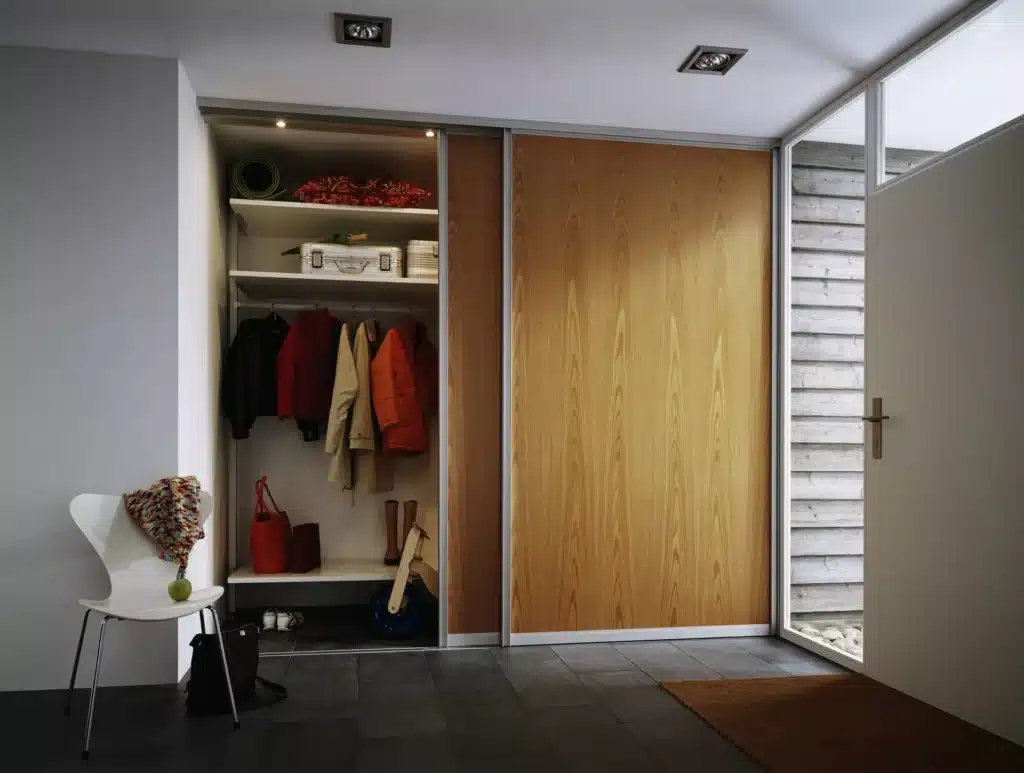
Conclusion
Next, you will need to prepare the wardrobe for the installation process. This involves removing the existing doors and any hardware that may be in the way. It is also a good idea to clean and declutter the wardrobe before proceeding. Once the wardrobe is ready, you can begin installing the sliding door tracks. This step requires careful measurement and alignment to ensure that the doors slide smoothly and do not get stuck.
Finally, you can attach the sliding doors to the tracks and make any necessary adjustments to ensure that they are level and aligned. This may involve adjusting the height or width of the doors, as well as tightening or loosening the rollers. Once everything is in place, you can test the doors to make sure they open and close smoothly. If necessary, you can also add handles or knobs to complete the look of your sliding wardrobe doors.
Installing sliding wardrobe doors on a wardrobe is a relatively straightforward process that can be completed with a few basic tools and some careful planning. By following the steps outlined in this guide, you can achieve a professional-looking result and enjoy the benefits of a stylish and functional wardrobe. So why wait? Start transforming your bedroom today!



